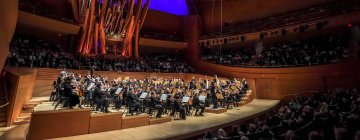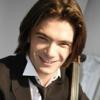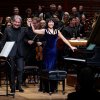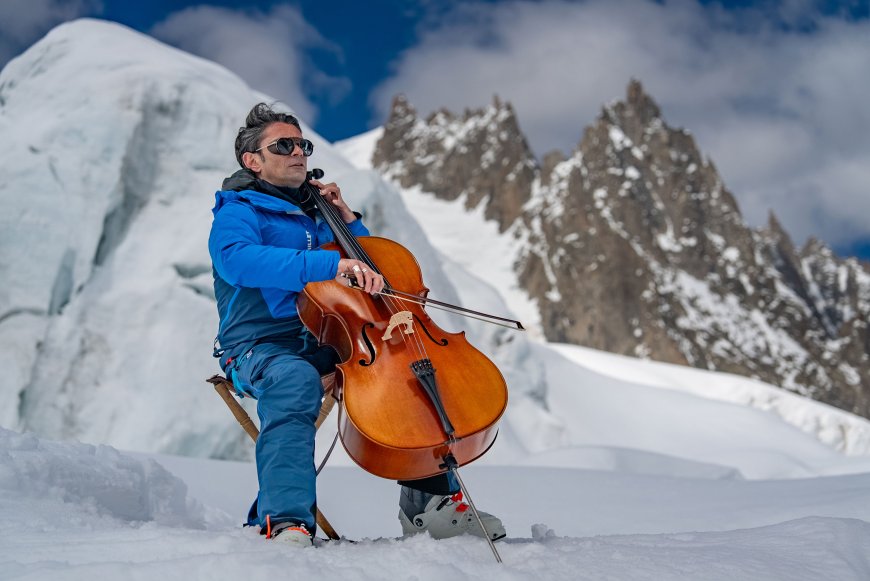
World-premiering his 16-composer project, Gaïa, with a half-dozen young cellists at Davies Symphony Hall on Nov. 16 is a fitting dream-come-true for Gautier Capuçon.
The 44-year-old has been exploring and expanding the possibilities of the cello, and the forces of nature, since he was a five-year-old in the French Alpine town of Chambéry, the historical capital of Savoy. A prize-winner at music schools in Savoy, Paris, and Vienna, Capuçon has made a mission of training and inspiring the next generation of cellists in his own country and abroad. Each July, his “Un Été en France” tour brings classical music to a panoply of French villages.
The cellist has been a repeat visitor at Davies and guested with numerous orchestras worldwide. He has recorded several best-selling award-winners for Erato Records (Warner Classics), and the Gaia album is scheduled for digital release on Nov. 7 and in CD and vinyl formats on Nov. 21.
Capuçon spoke with SFCV from Vienna last month.
For your premiere of Gaïa here, you’re assembling a section of six cellos from the San Francisco Symphony Youth Orchestra, and two other professional cellists. A critical mass of individual cello voices.
With cello, you have access to the full range of sound, from bass to middle register to upper register. So you can do a full orchestra, basically. This is one part which I’m very excited about for this concept.
One day, you arrive at a point in this journey in your life when you should give back, for all the great teachers, mentors, and meetings with other musicians that you’ve had. Now, I’m really looking forward to meeting those great young cellists and to perform these pieces written for me.
Will the program at Davies match the track list of the recording of Gaïa, which will become available this month?
It’s exactly the same. This recording is actually linked very much to the San Francisco Symphony, because this whole idea started when my dear friend Michèle Corash [from the SFS Board of Governors] and MTT [Michael Tilson Thomas] and I were having a dinner after a concert [in 2019, at Monsieur Benjamin]. That’s when the first ideas about this recording came, and that’s why the first concert worldwide will be here.

Tell me more about the ideas around the concept of Gaïa, who was the ancient Greek goddess of the Earth.
I grew up in the Alps, and for me, of course, nature was a part of my youth. Skiing was a big part of my life and still is. I think nature is of course connected very closely to music, and many composers have been inspired by nature. So, I wanted all our [commissioned] composers to send a message about the Earth and why we have to care about the Earth, where we are lucky to be.
Did you communicate with all those composers?
Yes. Some of them I’d worked with, and some I never worked with before. There was this idea about the album to have people coming from different cultures, different musical genres. I only told them to write about the Earth, and to use cellos, though we would have a piano for the recording and performance.
They’re all different stories, every composer tells about the Earth in his and her own way, depending on their relationship with it, and also on their culture and their education. The miracle is that when you listen to these pieces all together, it makes a whole story about the Earth. We did a video clip at Mont Blanc [about fifty miles northeast of Chambéry], illustrating one section of Gaïa, which is the “Journey Sequence” by Max Richter, very emotional, very moving, very intense, 4,800 meters high.
[The video will accompany the start of the performance of Gaïa at Davies, followed by compositions by 15 other composers. All pieces are briefer than five minutes.]
Gautier, what will you be presenting in Vienna?
Tomorrow, I’m playing the Austrian premiere of a concerto written for me by the great French composer Thierry Escaich, called Les Chants de l’aube. It’s a co-commission of the Gewandhausorchester Leipzig and Boston Symphony Orchestra, and it’s one of the most beautiful cello concertos written in the past thirty years. Thierry and I have known each other [for] twenty years, so there is something very personal in it.
Your programs and recordings showcase an impressive variety of works, many by contemporary composers. I imagine their appeal to you, in part, is what they bring out from your cello.
You’re absolutely right! Consider the evolution of the cello from the viola da gamba, and the evolution of the music with it. I spell music with a big “M,” and I feel we have much to learn and explore about it. Many of the composers that we play are dead, basically, and we would all love so much to ask Bach, Mozart, Brahms, and Schubert so many questions about their pieces. Of course, we cannot, but we lucky musicians [are] able to work with the composers of today, and they need us to play their music.
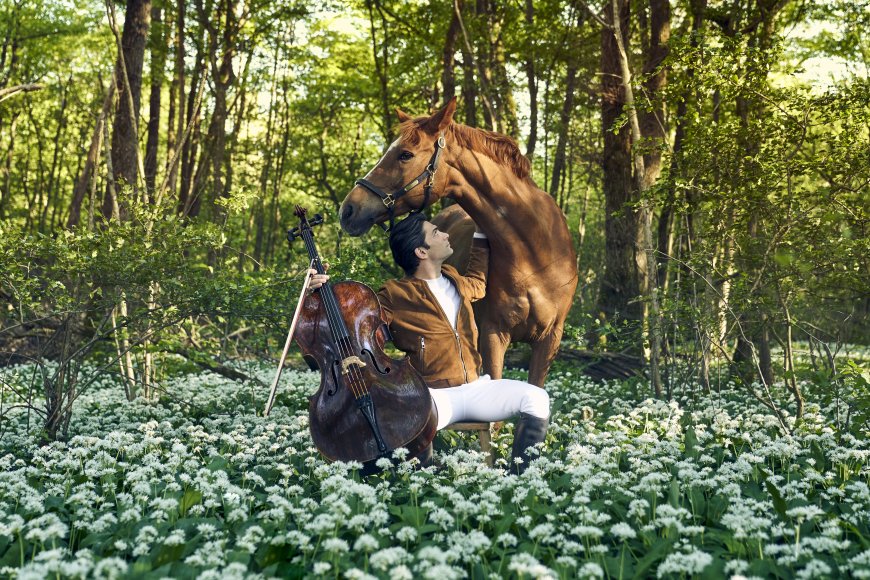
Your instruments have come to you from the past. And there’s been much talk among fans and the press and your publicists about your favored 1701 Matteo Goffriller cello. Will we hear that here?
No, because that cello, which is called the “Ambassador,” and [which] I have had for 25 years, has to go to the doctor to do a “checkup,” as we say. We have the big responsibility to take care of these incredible pieces of art. So right now I’m playing on another cello, which is a beautiful Stradivarius.
What’s different about the Stradivarius, and how do you adjust to the difference?
It’s a very, very different voice. Stradivarius is Cremona and Matteo Goffriller is Venezia, so it’s two real different sounds, different textures. The Goffriller is something more deep, very powerful, and very central. The Stradivarius has a beautiful, beautiful upper register, also powerful but gorgeous.
It’s very interesting, because even though you play on two different instruments, even if the DNA of the instruments is different, you still hear the voice of the player. And as a player, you never cease to learn. It’s different to speak about it technically, because it’s all a question of feelings — feeling the sound, the pressure with the bow. It’s micro details… you adjust sometimes even without thinking about it.
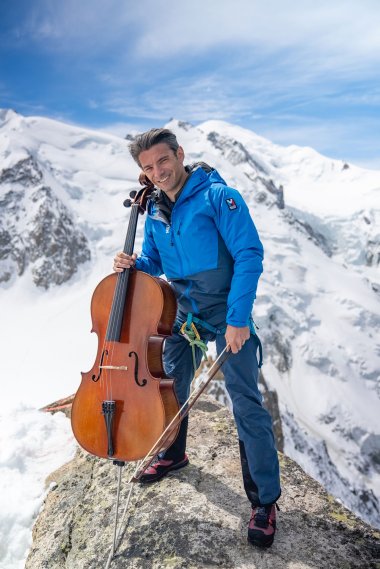
Aside from the inception of Gaïa at SF Symphony, are there other reasons you’re excited to premiere the project with us?
The first thing I should say is that my bond with San Francisco audiences is very important. I did my first concerts with the Symphony in 2009, though I had to cancel the first date because I had an appendectomy. But since then, I came very regularly to perform with the Symphony, and Michael [Tilson Thomas] is a very dear friend. He was really supportive over the years. And, of course, I had the chance to get around and outside of the city, where nature is so beautiful.
Has your brother Renaud, who is an acclaimed violinist himself, given any feedback on Gaïa yet?
No. I think he will find out about it like everyone else. I’m very much looking forward to see what he feels. For me, it’s a gift to be able to share this music and to put my own voice, my own cello, on these incredible pieces. It’s a real jewel that all these composers have made together, and I can’t wait for the San Francisco audience to discover this jewel.
